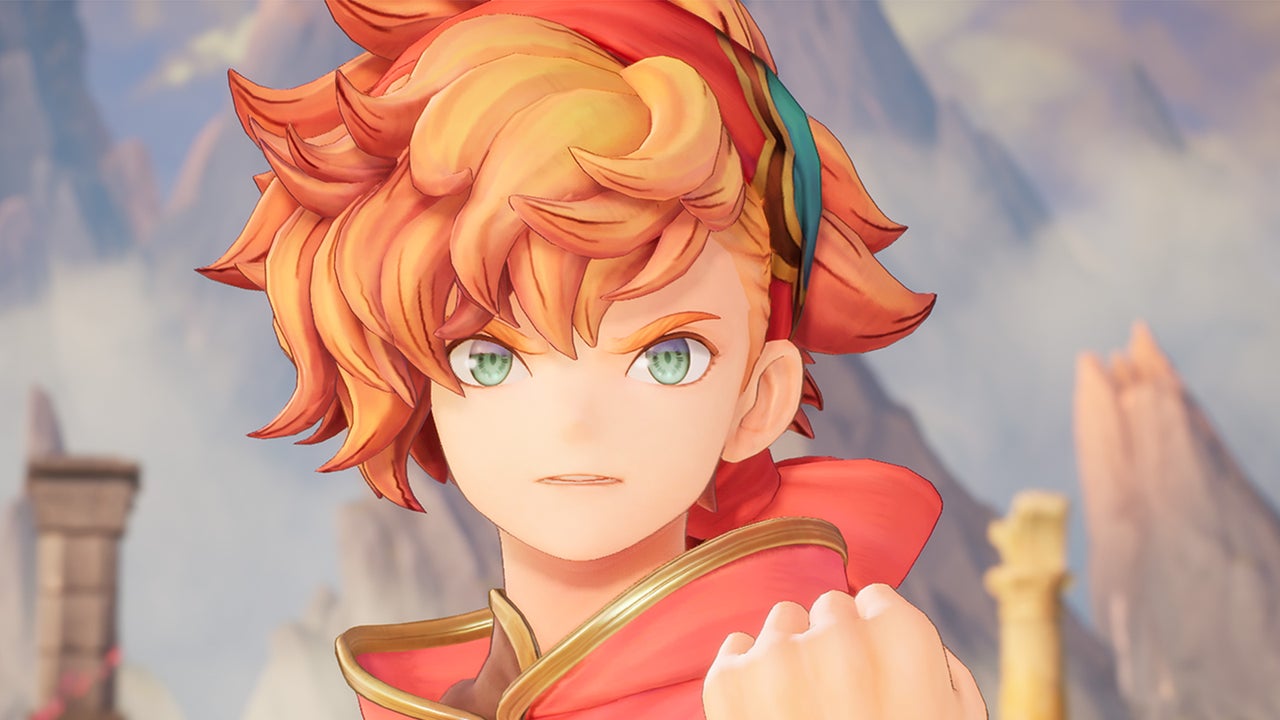Visions of Mana: A Modern Mana Classic with Combat That Shines

Visions of Mana, the long-awaited mainline entry in the Mana series, arrives after nearly two decades, carrying high expectations on its shoulders. Thankfully, this new adventure delivers a compelling experience that successfully brings the series into the modern era, featuring exhilarating combat, a deep class system, and a cast of endearing characters. While not without its flaws, Visions of Mana stands tall as a fantastic Mana game and one of the best JRPGs of recent years.
The story, though simple in its initial stages, unfolds with a charming narrative. Players take on the role of Val, a skilled swordsman entrusted with safeguarding a group of chosen souls destined to sustain the Tree of Mana. Val, alongside his childhood friend Hinna, a sweetly determined young woman, embarks on a journey that is both heartwarming and compelling. Val's cheerful disposition and Hinna's unwavering optimism create a captivating dynamic that sets the stage for a truly engaging adventure.
The journey unfolds as Val and Hinna encounter a colourful cast of companions, each with their own quirks and motivations. Careena, a spunky and sometimes irritable young woman, surprisingly speaks with a Texan twang. Morely, the group's resident stoic, provides comedic moments with his blunt honesty. Each character possesses a distinct personality, adding depth and variety to the narrative. Their individual backstories, seamlessly integrated into the main plot, offer opportunities for personal growth, transforming initially perceived flaws into endearing qualities. For example, Careena's initial brusqueness evolves into a genuine warmth, solidifying her position as a cherished member of the group.
While the first half of the story moves at a satisfying pace, the latter half unfortunately slows to a crawl. The final stretch, spanning approximately 15-20 hours, feels unnecessarily padded with repetitive elements that derail the narrative's momentum. This shift also marks a departure from the initial simplicity, as the story becomes bogged down with heavy-handed exposition dumps. Despite these pacing issues, the overall narrative remains enjoyable, culminating in a satisfyingly emotional conclusion.
The true star of Visions of Mana, however, lies in its combat system. Fights are fast-paced and exhilarating, demanding tactical prowess and quick reflexes. Players wield a variety of attacks, from standard and special moves to elemental spells, all aimed at exploiting enemy weaknesses. The strategic element is further amplified by the Class Strike gauge, which fills upon attacking, taking damage, or using moves, allowing players to unleash devastating attacks at crucial moments.
Adding another layer of depth is the Elemental Vessel system, which equips characters with special abilities. These Vessels, such as the Luna Globe, which creates a bubble that slows down enemies, offer unique tactical advantages. However, equipping a Vessel automatically transforms the character into the associated class, unlocking a unique set of moves and abilities. Val, for instance, becomes an Aegis when equipped with the Luna Globe, transitioning from a melee fighter to a tank-like character wielding a lance and shield.
The class system, arguably the game's most compelling mechanic, allows each character to assume a distinct role for each element. This diversity encourages experimentation and strategy as players swap between classes, seamlessly adapting to the challenges presented. The Elemental Plot, an upgrade system, further enhances combat by unlocking new moves and abilities for each Vessel. While learned moves remain permanent, abilities are tied to the specific class, fostering a balanced approach to character development.
A delightful touch adds to the class system: a wonderfully cheesy transformation sequence unfolds when a character equips a Vessel for the first time. These Super Sentai-inspired cutscenes, filled with dramatic poses and glowing effects, are a treat for the eyes and offer a delightful dose of lightheartedness.
Combat is further enriched by Ability Seeds, obtained through quests, chests, and battles. These Seeds provide passive bonuses, stat increases, and new moves. Later in the game, players can even incorporate the Corestones of defeated enemies and bosses into more powerful Seeds.
Visions of Mana's combat is a testament to strategic gameplay, encouraging players to think beyond button mashing. While certain classes may be preferred, the dynamic nature of combat demands flexibility and adaptability, encouraging experimentation with different classes and Ability Seeds.
The exploration aspect of Visions of Mana is equally impressive. Lush jungles, snow-covered tundras, and bustling seaside villages are rendered with stunning detail, each location boasting a unique aesthetic that showcases the game's vibrant art style. Hidden chests and collectables reward players who meticulously explore every corner of the map, encouraging exploration of optional areas that might otherwise be overlooked.
Despite the game's artistic prowess, minor visual glitches are noticeable. Lip-syncing inconsistencies and occasional instances of characters speaking without mouth movements detract slightly from the overall experience. Framerate drops, though infrequent, were observed on a PlayStation 5, even in performance mode.
In conclusion, Visions of Mana is a welcome addition to the Mana series, offering a captivating adventure with thrilling combat, a deep class system, and an endearing cast of characters. While pacing issues may arise in the latter half of the story, the game's strengths, particularly its combat and exploration elements, overshadow these minor flaws. Visions of Mana is a must-play for fans of the series and JRPG enthusiasts alike, offering a truly memorable and rewarding experience.





